CTR 顶刊动态
背景介绍
丙二烯(CH2=C=CH2)是二烯烃的母体化合物,是有机合成的重要原料。目前,纯丙二烯采用化学合成法生产,存在产率低、能耗高、不良的废物副产物的问题,迫切需要一种生产纯丙二烯的替代方法。丙二烯通常与其他气体(如丙炔)混合使用,由于其分子尺寸相似(差值<0.2 Å)且沸点相近(差值=10.8 °C),因此很难从中分离出来。当前,还没有有效的途径来提纯丙二烯,工业上通常将含丙二烯的混合物作为燃料直接燃烧,造成大量浪费。
近来,利用多孔吸附剂的物理吸附分离一直备受关注。吸附剂可以取代传统的蒸馏分离方法,能耗低、操作简单、安全性好。金属有机骨架(MOFs)为多孔配位聚合物,是一类有前途的物理吸附剂,用于捕获、分离和纯化轻烃气体混合物。通过物理吸附分离气体混合物取决于几个因素,包括气体分子的极性、大小和形状。通常,这些因素的差异越大,越容易实现高效分离。然而,丙炔/丙二烯分离仍未解决。
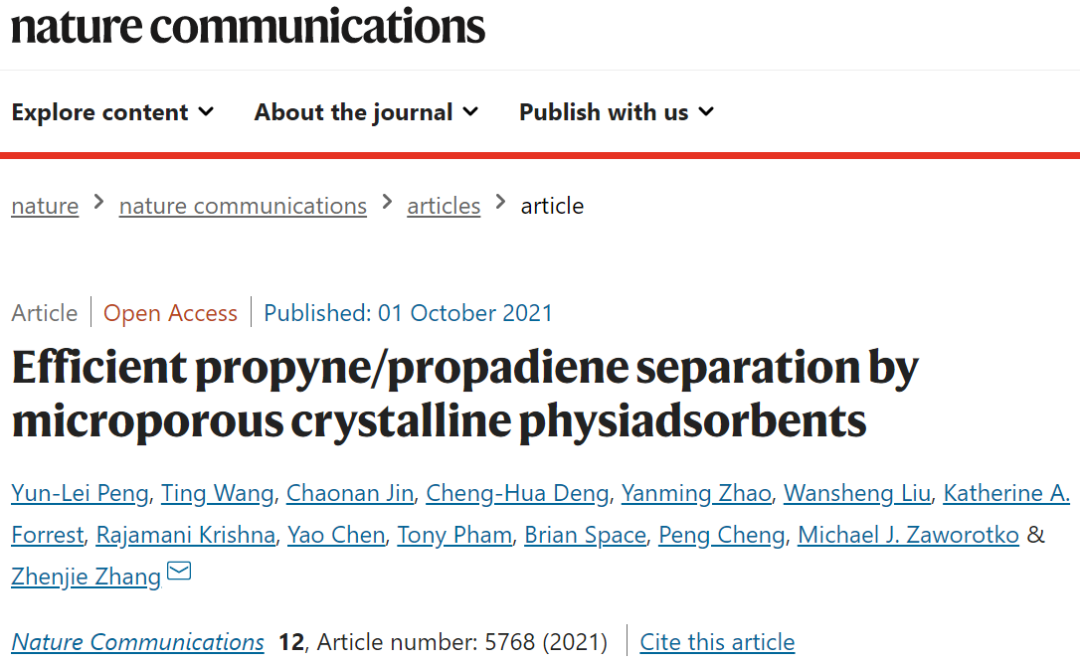
成果简介
近日,南开大学张振杰研究员(通讯作者)等人报道了一种热力学动力学双驱动分离策略,该策略使用具有致密开放金属位置(OMSs)和笼型分子陷阱的微孔MOF吸附剂(以HKUST-1和MOF-505为例),实现了高效的丙炔/丙二烯分离。该策略可以提供由两个因素驱动的所需性能:
1)丙炔中的C≡C部分与OMSs有明显的结合;
2)可以调整吸附剂的孔形状以控制气体扩散,从而增强动态筛选效果。该研究表明,通过综合比较一系列候选吸附剂,具有高密度OMSs和受限笼型分子陷阱的微孔MOF(以HKUST-1和MOF-505为例)表现出最佳分离性能。其中,经动态突破实验证实,HKUST-1分离得到丙二烯产量高达69.6 cm3/g,纯度>99.5%。通过实验和建模研究对HKUST-1性能进行深入的了解,并表明它可以归因于HKUST-1中丰富的开放金属位点和笼型分子陷阱所产生的热力学和动力学之间的协同作用。更重要的是,HKUST-1是为数不多的采用当前生产方法以工业规模生产的MOF之一,其产量为400000 kg m-3 day-1。
图文速递
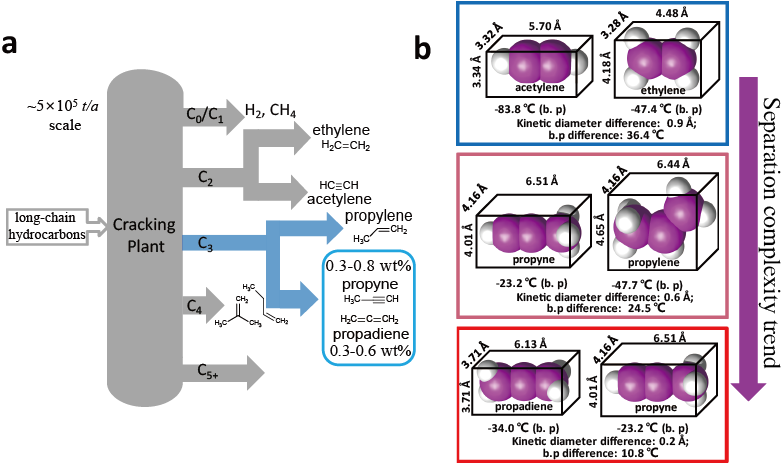
Figure 1. The major sources and separation complexity of light hydrocarbons. a Schematic diagram of the hydrocarbon cracking process. b Comparison of molecular size, kinetic diameter, and b.p difference of acetyleneðylene, propyne&propylene and propyne&propadiene.
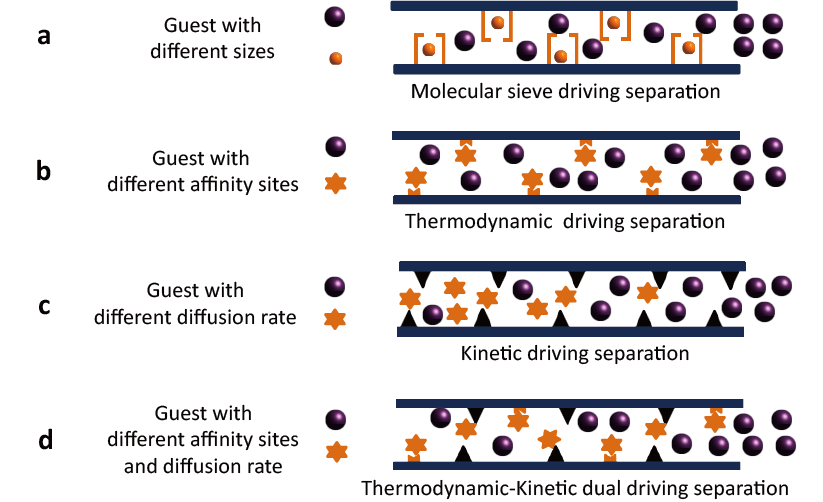
Figure 2. Illustration of adsorption separation mechanisms in physisorbents. a Molecular sieving. b Thermodynamically driven separation. c Kinetically driven mechanism. d Thermodynamic-kinetic dual-driving mechanism.
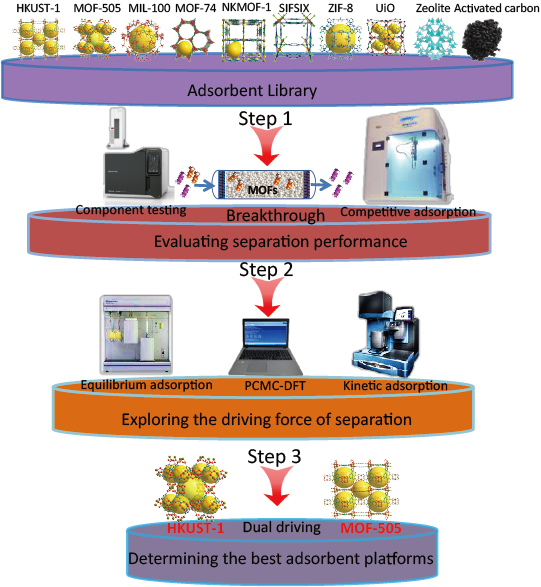
Figure 3. Illustration of the assay package used herein for determining propyne/propadiene separation performance.
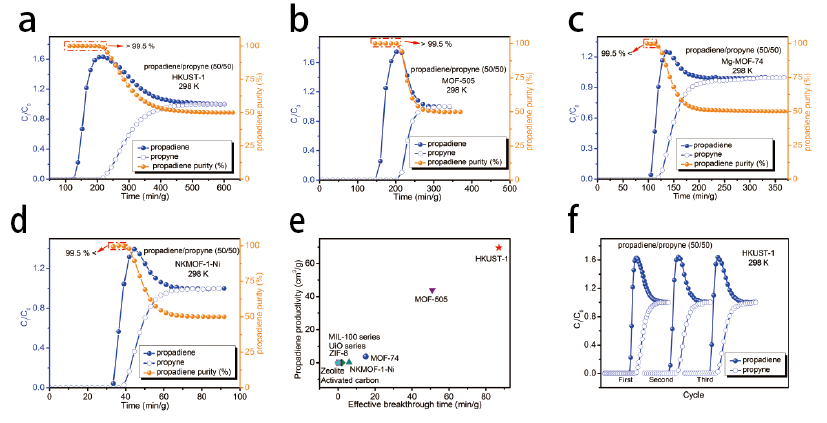
Figure 4. Experimental breakthrough curves of the MOFs with OMSs for propyne/propadiene (50/50, v/v) separation at 298 K. a HKUST-1. b MOF-505. c Mg-MOF-74. d NKMOF-1-Ni. e Comparing productivity of propadiene for corresponding breakthrough experiments in the adsorbent library. f Cycling tests of HKUST-1 for propyne/propadiene mixture ( gas velocity: 2.0 mL/min).
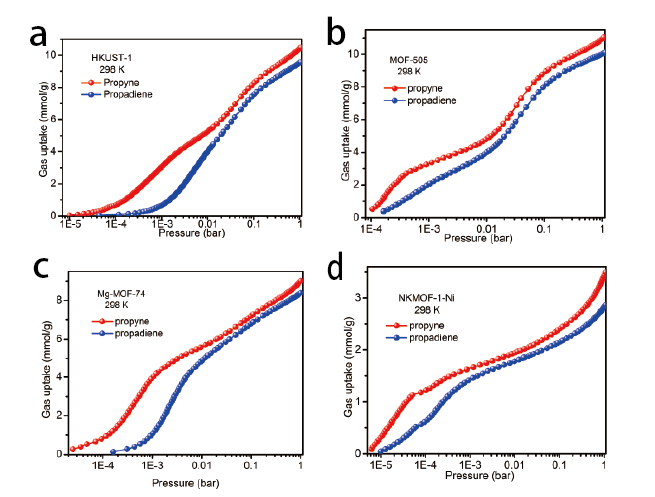
Figure 5. Propyne and propadiene equilibrium adsorption isotherms of the selected MOF materials at 298 K. a HKUST-1. b MOF-505. c Mg-MOF-74. d NKMOF-1-Ni.
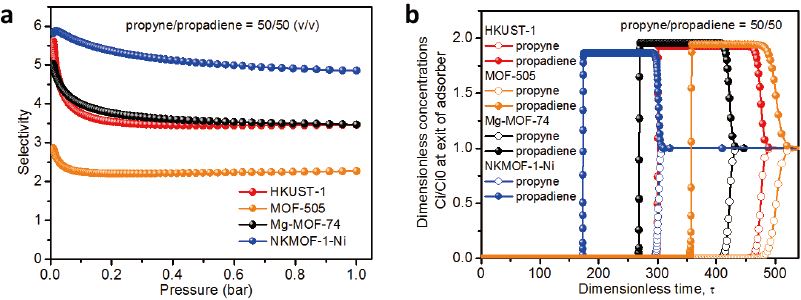
Figure 6. IAST adsorption selectivities and simulation breakthrough curves for separation of propyne/propadiene for 50/50 (ν/ν) at 298 K. a IAST adsorption selectivities. b simulation breakthrough curves.
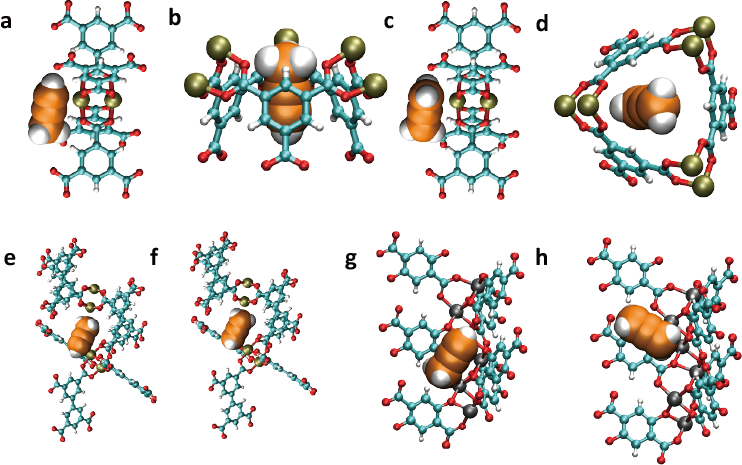
Figure 7. Perspective views of a portion of the crystal structure of HKUST-1, MOF-505, and Mg-MOF-74, showing the optimized position of propyne and propadiene molecules. a OMSs units of HKUST-1 for propyne. b tetrahedral cages units of HKUST-1 for propyne. c OMSs units of HKUST-1 for propadiene. d tetrahedral cages units of HKUST-1 for propadiene. e OMSs units of MOF-505 for propyne. f OMSs units of MOF-505 for propadiene. g OMSs units of Mg-MOF-74 for propyne. h OMSs units of Mg-MOF-74 for propadiene. Atom colors: C(MOF) = cyan, C(propene) = orange, H = white, N = blue, O = red, Cu = oliver green, Mg = sliver.
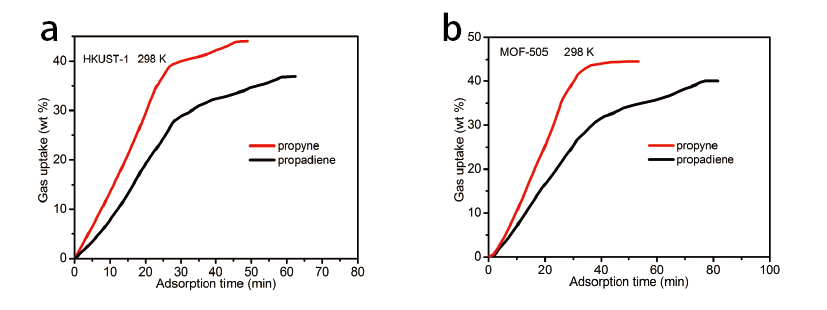
Figure 8. Gravimetric propyne and propadiene sorption kinetics at 298 K. a HKUST-1. b MOF-505.
总结展望
综上所述,该研究强调了动力学和热力学对于丙二烯与丙炔分离性能的重要性。动态混合气体突破实验表明,MOFs与OMSs和笼型分子阱具有协同效应,可提供基准分离性能(丙二烯产量高达69.6 cm3/g,纯度>99.5%),而传统多孔材料(如活性炭和沸石)没有分离效果。该研究为吸附剂的选择提供了一个设计原则,以及一个可能广泛应用于吸附剂评价的筛选方案。
文献信息
Efficient propyne/propadiene separation by microporous crystalline physiadsorbents.Nature Communications, 2021, DOI: 10.1038/s41467-021-25980-y.
https://doi.org/10.1038/s41467-021-25980-y.
 先进能源材料化学教育部重点实验室(南开大学)
Key Laboratory of Advanced Energy Materials Chemistry, Ministry of Education (Nankai University)
先进能源材料化学教育部重点实验室(南开大学)
Key Laboratory of Advanced Energy Materials Chemistry, Ministry of Education (Nankai University)
